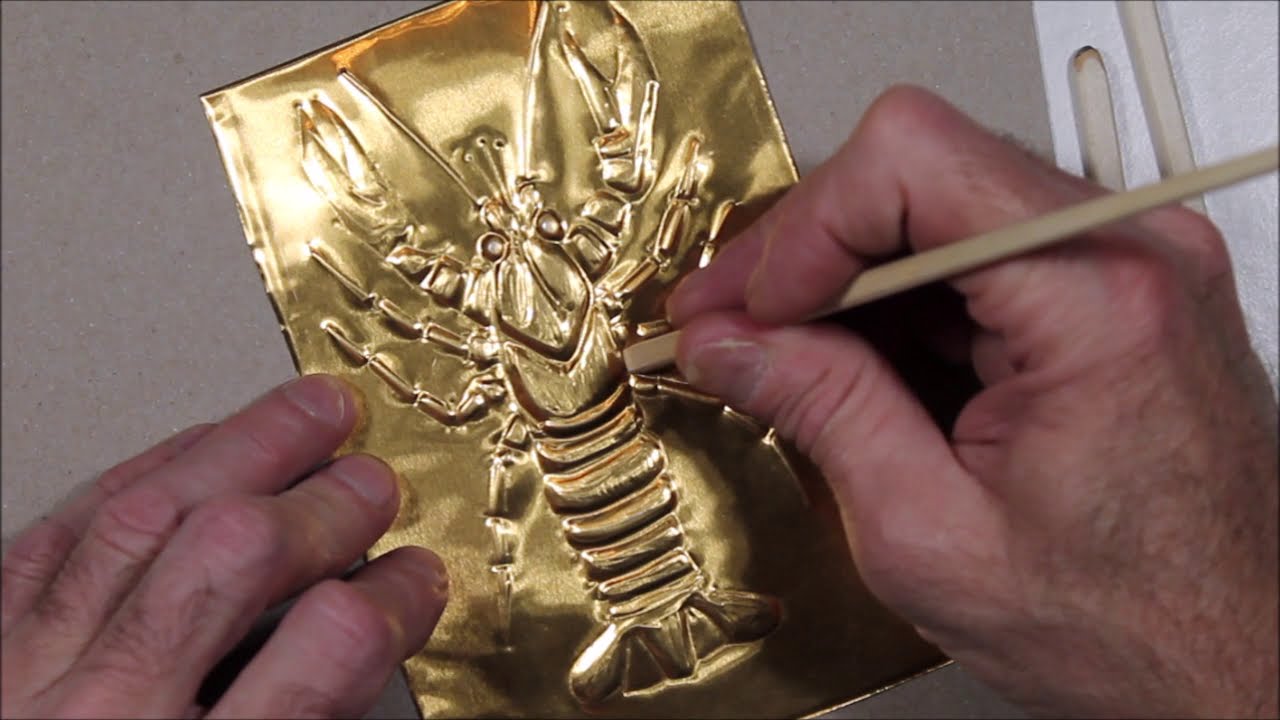
Repoussé is an ancient metalworking technique that involves hammering metal from the reverse side to create a design in low relief. This method has been used for centuries to craft intricate patterns on various objects, from jewelry to large-scale sculptures. But what makes repoussé so special? Its ability to transform a flat piece of metal into a three-dimensional work of art is truly remarkable. Artists and craftsmen have relied on this technique to add depth and texture to their creations, making each piece unique. Whether you're a history buff, an art enthusiast, or just curious about different crafting methods, learning about repoussé can be both fascinating and inspiring. Dive into these 30 facts to uncover the rich history and intricate details of this timeless art form.
What is Repoussé?
Repoussé is a metalworking technique where metal is shaped by hammering from the reverse side to create a design in low relief. This ancient art form has been used for centuries to create intricate designs on various metal objects.
- Repoussé is derived from the French word "repousser," meaning "to push back."
- This technique dates back to ancient civilizations, including Egypt, Greece, and Rome.
- Repoussé is often combined with chasing, which involves refining the design on the front side of the metal.
- The Statue of Liberty's copper skin was created using repoussé.
- Repoussé can be done on various metals, including gold, silver, copper, and bronze.
Historical Significance of Repoussé
Repoussé has played a significant role in art and culture throughout history. Many famous artifacts and artworks have been created using this technique.
- Ancient Egyptian pharaohs' burial masks were often made using repoussé.
- Greek armor and helmets frequently featured repoussé designs.
- The famous "Mask of Agamemnon" is a prime example of repoussé work from ancient Greece.
- Medieval European churches often used repoussé to decorate religious artifacts.
- The Benin Bronzes from Nigeria are renowned for their intricate repoussé work.
Techniques and Tools
Creating repoussé requires specific tools and techniques to achieve the desired results. Understanding these tools can help appreciate the skill involved in this art form.
- A repoussé hammer is a specialized tool with a rounded head used to shape the metal.
- Chasing tools, such as liners and matting tools, are used to refine details on the front side.
- Pitch is a substance used to support the metal while it's being worked on.
- Repoussé artists often use a variety of punches to create different textures and patterns.
- Annealing, or heating the metal, is a crucial step to make it more malleable.
Modern Applications of Repoussé
While repoussé has ancient origins, it continues to be used in modern art and design. Contemporary artists and designers have found new ways to incorporate this technique into their work.
- Jewelry designers use repoussé to create unique, textured pieces.
- Repoussé is often used in custom car and motorcycle detailing.
- Modern sculptures sometimes feature repoussé elements for added depth and texture.
- Some fashion designers incorporate repoussé metalwork into their clothing and accessories.
- Repoussé techniques are taught in many art and design schools around the world.
Famous Repoussé Artworks
Several well-known artworks and artifacts showcase the beauty and intricacy of repoussé. These pieces highlight the skill and creativity of the artists who created them.
- The "Golden Mask of Tutankhamun" is a stunning example of ancient Egyptian repoussé.
- The "Portland Vase" features intricate repoussé designs on its surface.
- The "Silver Chalice of Antioch" is a famous example of early Christian repoussé work.
- The "Gundestrup Cauldron" from Denmark is a remarkable piece of Celtic repoussé art.
- The "Bronze Doors of Ghiberti" in Florence, Italy, feature detailed repoussé panels.
Repoussé in Different Cultures
Repoussé has been used by various cultures around the world, each adding its unique touch to the technique. These cultural variations showcase the versatility and adaptability of repoussé.
- In India, repoussé is used to create intricate designs on temple doors and religious artifacts.
- Japanese metalworkers use repoussé to create detailed samurai armor and sword fittings.
- In Mexico, repoussé is often used in traditional silver jewelry and decorative items.
- African artisans use repoussé to create stunning masks and sculptures.
- In Russia, repoussé is used to decorate religious icons and ceremonial objects.
The Art of Repoussé
Repoussé, a technique with roots in ancient civilizations, remains a testament to human creativity and craftsmanship. This method, which involves hammering metal from the reverse side to create intricate designs, has been used to produce stunning works of art, from jewelry to large-scale sculptures. Its enduring appeal lies in the unique textures and patterns that can be achieved, making each piece a one-of-a-kind masterpiece.
Understanding the history and process of repoussé not only deepens our appreciation for these artworks but also highlights the skill and patience required to master this craft. Whether you're an art enthusiast or a budding metalworker, exploring repoussé offers a glimpse into a rich tradition that continues to inspire and captivate. So next time you see a beautifully detailed metal piece, you'll know the incredible effort and artistry behind it.
Was this page helpful?
Our commitment to delivering trustworthy and engaging content is at the heart of what we do. Each fact on our site is contributed by real users like you, bringing a wealth of diverse insights and information. To ensure the highest standards of accuracy and reliability, our dedicated editors meticulously review each submission. This process guarantees that the facts we share are not only fascinating but also credible. Trust in our commitment to quality and authenticity as you explore and learn with us.
